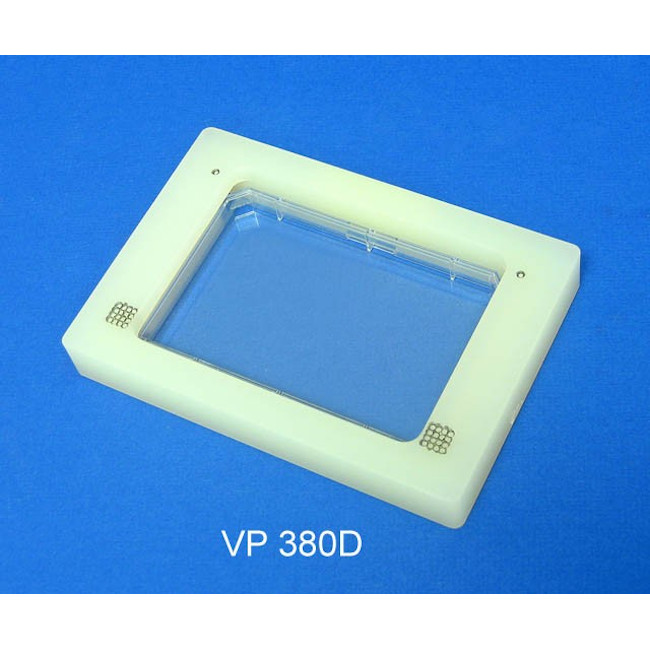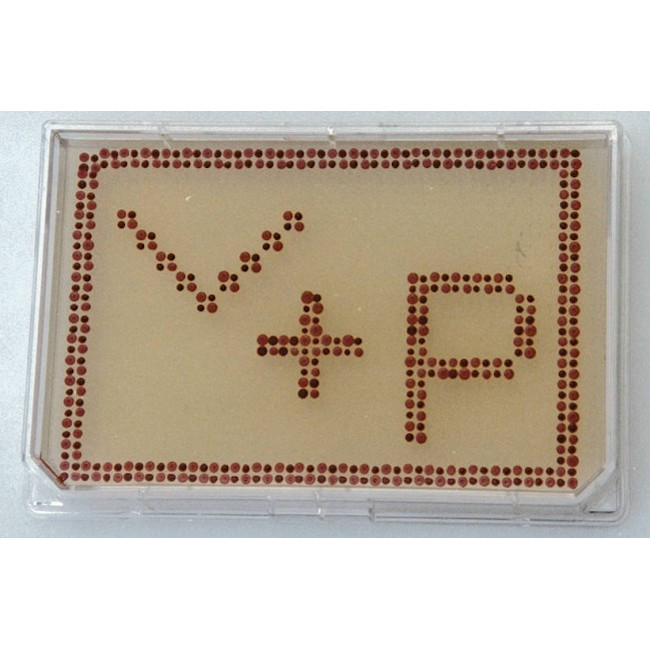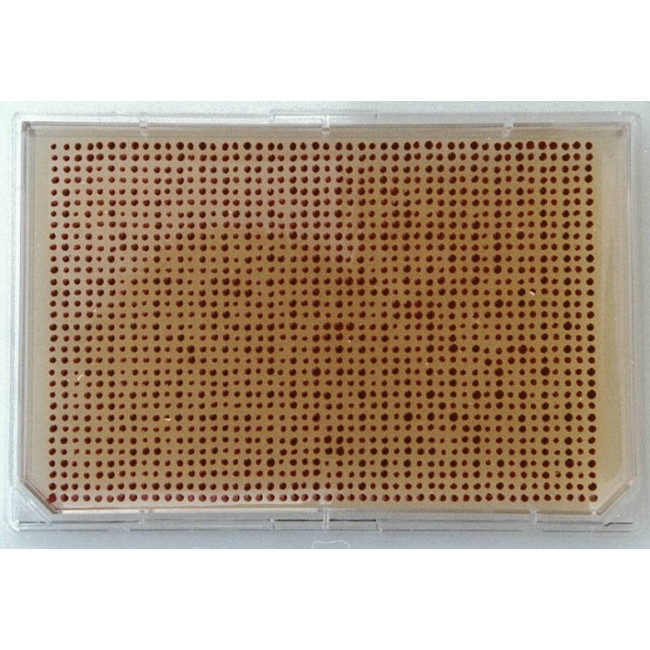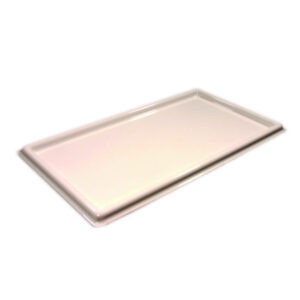The COLONY COPIER™ is a simple registration accessory for 48, 96 and 384 pin MULTI-BLOT™ Replicators. The COLONY COPIER™ is placed over a Nunc Omni Tray and aligns itself to the external surfaces of the Omni Tray and precisely registers the MULTI-BLOT™ Replicator's stainless steel pins to the interior of the Omni Tray. High density offset arrays of blots or colonies are produced on a single Omni Tray by inoculation at each alignment hole pair using our unique system of guide pins and alignment hole pairs. The COLONY COPIER™ (VP 380) has 2 sets of 9 alignment holes on the front frame (a 3 by 3 array for 48, 96 pin MULTI-BLOT™ Replicators yielding 432 and 864 blots) and 2 sets of 4 alignment holes on the rear frame (a 2 by 2 array for 384 pin MULTI-BLOT™ Replicators yielding 1,536 blots).
The high density COLONY COPIER™ (VP 380D) has 2 sets of the alignment holes on the front frame (a 4 x 4 array for 96 pin MULTI-BLOT™ Replicators yielding 1536 blots and 768 blots for 48 pin MULTI-BLOT™ Replicators). If you are transferring DNA, cDNA or other materials in hydrophobic solutions you will find that our new V&P Pin Cleaning Solution treatment of the pins will greatly increase the precision of delivery.
Using Robotic Pin tools or Manual Replicators to inoculate Agar Plates
1. The first step in inoculating organisms on to an agar Omi Tray is to make sure that the tray surface is absolutely level before pouring the agar. The next important step is not to move the tray until after the agar has completely solidified. This creates the flattest and most even surface possible. Moving the plate prematurely creates a meniscus at the edge.
2. Second, use the plates within a day or 2 of pouring. Drying will also create a meniscus at the edge.
3. Third, although you can use fixed pin Manual Replicators if your agar plates are perfectly smooth and level, it is best to use Robotic Floating Pin Tools or Manual Floating Pin Replicators which will accommodate for irregularities in the agar surface, meniscus effect or unlevel surfaces .
Figure 1 is a photograph of an Omni Tray filled with nutreint agar, inoculated with Saccharomyces cerevisiae and cultured for 3 days.
.
5. For customers who are doing “yeast mating experiments” between different organisms they often use our floating pin Replicator (VP 407FP13) (2.36 mm diameter floating pins ) and facilitated by a device that registers the pin tool to the the Omni Tray (VP 380D Colony Copier) to make a 2 by 2 array on the agar and allowing 3 of the 4 colonies to grow together and facilitate 3 way mating. This has become a very powerful method for studying yeast genetics.
6. We have found that blunt or chamfered tipped pins work the best on agar. We DO NOT recommend using slot tipped pins on agar.
Figure 2 is a photograph of an Omni Tray filled with nutreint agar, inoculated with a VP 407AM fixed pin replicator from 96 wells containing Lactobaccilllus _____
cultures that had been each trreated with toxic or grow stimulating factors.and cultured for 3 days.
.
7. Bacteria are also easily inoculated on to agar plates and examined for the effect of various treatments on the ability of the organisms to grow. The Bacteria above were inoculated with a 2.36 mm Diameter fixed pin replicator.
References on Inoculating Arrays on Agar Plates
- The Sacchromyces Genome Deletion Project, uses our pin tools to inoculate yeast onto agar plates. The hyperlink will take you to the protocol where that procedure is described.(link)
- The DeRisi Lab at UCSF internet posting of protocol to inoculate yeast onto agar plates with V&P replicators.(link)
- Method used with pin tools and Colony Copiers to make Synthetic Genetic Arrays, Boone Lab, University of Toronto (link)
- Internet Posting. Sackler. SGA Analysis: (link)
- L. Patrone, S.E. Henson, J. Teodrovic, C.S. Malone, S.W. French, R. Wall, and M.A. Teitell. (2003) Gene expression patterns in AIDS versus non-AIDS-related diffuse large B-cell lymphoma. Experimental and Molecular Pathology 74, 2003, p. 129-139. (link)
- N. C. Gassner, C. M. Tamble, J. E. Bock, et al J. Nat. Prod. (2007), Accelerating the Discovery of Biologically Active Small Molecules Using a High-Throughput Yeast Halo Assay. 70, 383-390 (link)






